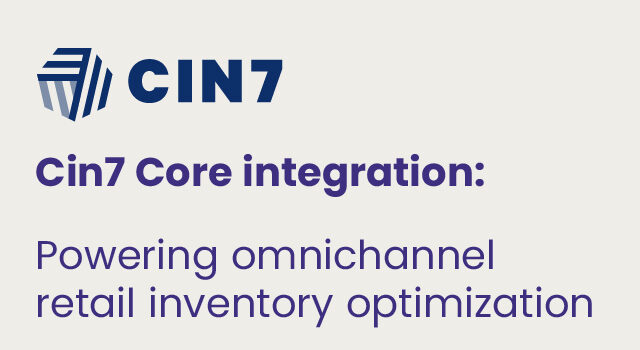Discover how SMBs are using data-driven strategies to navigate tariff-induced supply chain disruptions in 2025.
Tariffs are becoming a major factor in supply chains, and it’s too big a disruption to ignore! Small and mid-sized businesses (SMBs) are feeling the pressure as they navigate a changing global trade landscape, facing new challenges in inventory planning, sourcing, and financial forecasting. With governments globally using tariffs more strategically, SMBs are being impacted with new cost structures that directly impact their bottom line. In fact, in a recent Netstock tariff survey, there was a 9% decrease in average inventory value across these SMBs, indicating that tariffs have fundamentally forced businesses to rethink inventory strategies and adapt to new cost pressures. Understanding the knock on effect of how tariffs impact supply chains is crucial for maintaining profitability and resilience.
What’s in this blog?
The current tariff challenge for SMBs
Tariff changes are shaking up supply chains in nearly every sector. Recent surveys reveal nearly two-thirds of SMBs anticipate disruption from newly enacted or adjusted tariffs. These disruptions take many forms, including delayed shipments, increased landed costs, and inconsistent availability of goods. Without the extensive procurement resources available to large enterprises, SMBs are especially exposed to fluctuations. With 63% of SMBs expecting moderate to significant supply chain disruption due to tariffs, businesses must identify which products are most vulnerable to cost increases to stay resilient and keep inventory moving.
Supply chain vulnerabilities exposed
The challenge of managing inventory while dealing with tariffs stems from the unique position of SMBs. Many SMBs rely on a smaller pool of suppliers, leaving them with limited negotiating power and flexibility. In fact, over half of the respondents to Netstock’s survey noted that tariffs will affect at least half of their active SKUs. This demonstrates that SMBs face higher replenishment costs, longer lead times, and reduced profit margins. Reactive practices are no longer viable as tariffs continue to reshape inventory management.
Data-driven decision making: the competitive edge
To thrive in uncertainty, SMBs must shift from gut-based decision-making to data-driven supply chain decisions. Unfortunately, only 12% of these businesses currently use advanced analytics to understand the true cost implications of tariffs. However, those that do are finding ways to optimize order cycles, recalibrate inventory policies, and forecast tariff effects across their value chain. This means only a few businesses effectively use analytics to navigate tariff impacts, opening up a significant competitive opportunity for SMBs who adopt data-driven supply chain decisions as a strategic advantage.
Five adaptation tariff strategies for success
With tariffs at play, SMBs need to develop solid strategies to mitigate their effects and future-proof their operations. A comprehensive approach combining inventory optimization, supplier diversification, and technology adoption is proving most effective in mitigating the impact of tariffs. By investing in forward-looking tariff mitigation strategies, SMBs can cushion the impact of external shocks and gain long-term stability.
Inventory optimization through forecasting
Accurate forecasting is crucial, and given tariffs’ unpredictability, SMBs are turning to inventory forecasting tariff tools that use real-time demand signals and historical data to avoid excess stock or stock-outs. With smart forecasting, businesses can maintain the right levels of inventory despite tariff-induced disruptions, helping them allocate capital efficiently and uphold strong service levels.
Strategic supplier diversification
Relying too heavily on a single country or region has become a risk. To lower their exposure to tariffs, SMBs are investing in supplier diversification strategies, including sourcing from Southeast Asia, Latin America, and Eastern Europe, and nearshoring to North America when possible. Although full reshoring is limited to a small percentage, only 15% of SMBs are actively seeking alternatives to China-dominated supply chains to improve resilience and reduce lead time variability. These tariff mitigation strategies enhance sourcing agility and reduce concentration risk.
Discover how Netstock can help improve supplier reliability
Pricing strategy adjustments
As tariffs increase input costs, many SMBs must reevaluate their pricing strategies. A deliberate tariff pricing strategy involves segmenting customers, assessing price elasticity, and identifying which products can bear price increases. SMBs are analyzing margin contributions and customer sensitivity to determine which tariff impacts on supply chains should be absorbed and which should be passed through. This way, they can protect their profit margins while keeping customer loyalty intact.
Leveraging Technology for visibility
Real-time supply chain visibility is no longer an optional advantage; it’s a necessity. The most effective response to uncertainty is clarity, and supply chain analytics for tariffs enables SMBs to identify cost drivers, monitor supplier performance, and simulate tariff scenarios. These insights empower leaders to make confident, data-backed decisions. Embracing supply chain analytics for tariffs is crucial for scenario modeling and long-term planning.
“Whilst most of our business is in the U.S, we do work with global vendors and need to closely monitor potential tariff changes. Netstock helps us plan ahead by running ‘what-if’ scenarios, so we can adjust costs and margins proactively.” Sophie Idh, Director of Supply Chain, Grundéns
Rethinking safety stock calculations
Traditional models for safety stock fall short when lead times are unpredictable. SMBs are now reengineering safety stock practices to account for the tariff impact on safety stock. Increased lead time variability requires new approaches incorporating supplier reliability scoring, demand forecasting, and service level optimization. Reassessing safety stock through the lens of the tariff impact on supply chains ensures both resilience and efficiency.
Learn how Netstock automatically manages safety stock for you
Face tariffs head-on with smarter planning
In 2025, tariffs are more than a trade policy; they’re a defining force in the supply chain landscape. For SMBs, adapting to this new reality means rethinking sourcing, inventory planning, pricing, and analytics from the ground up. The tariff impact on supply chains isn’t going away. The solution? By deploying the right supply and demand planning tools and strategies, SMBs can transform disruption into opportunity. Businesses embracing forecasting, tariff mitigation strategies, supplier diversification, and data-driven supply chain decisions will survive these shifts and become stronger and more agile in the long run.







